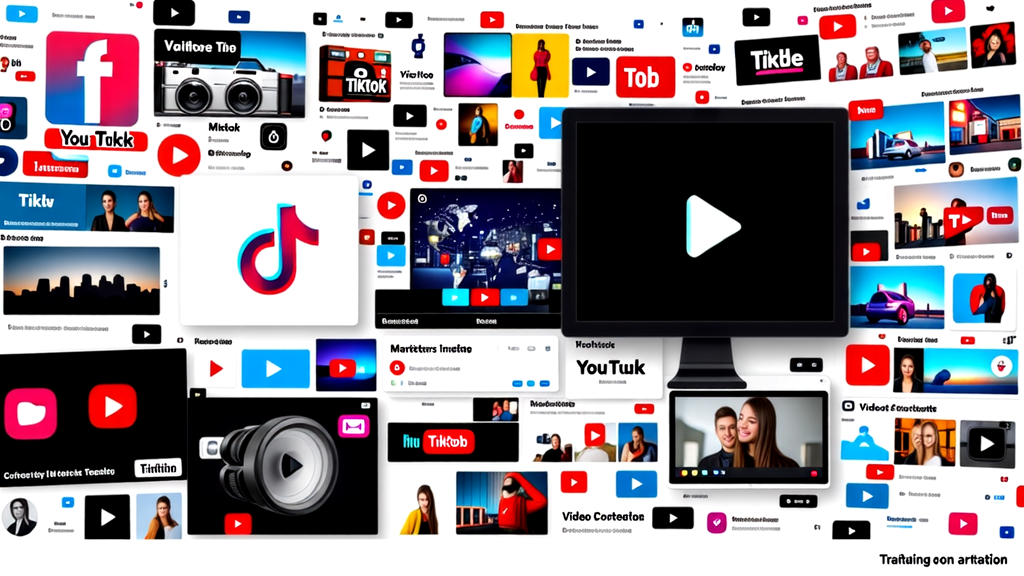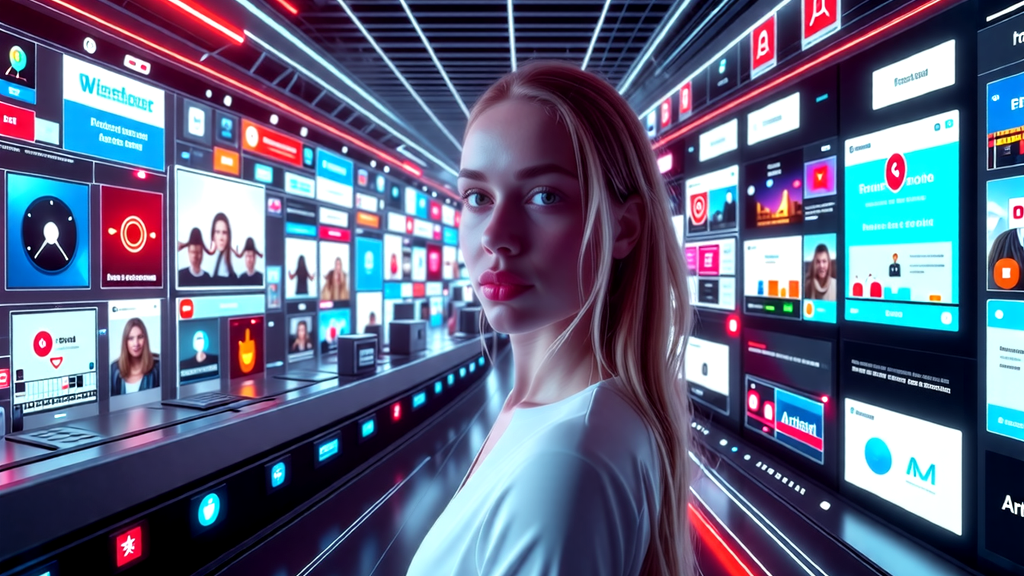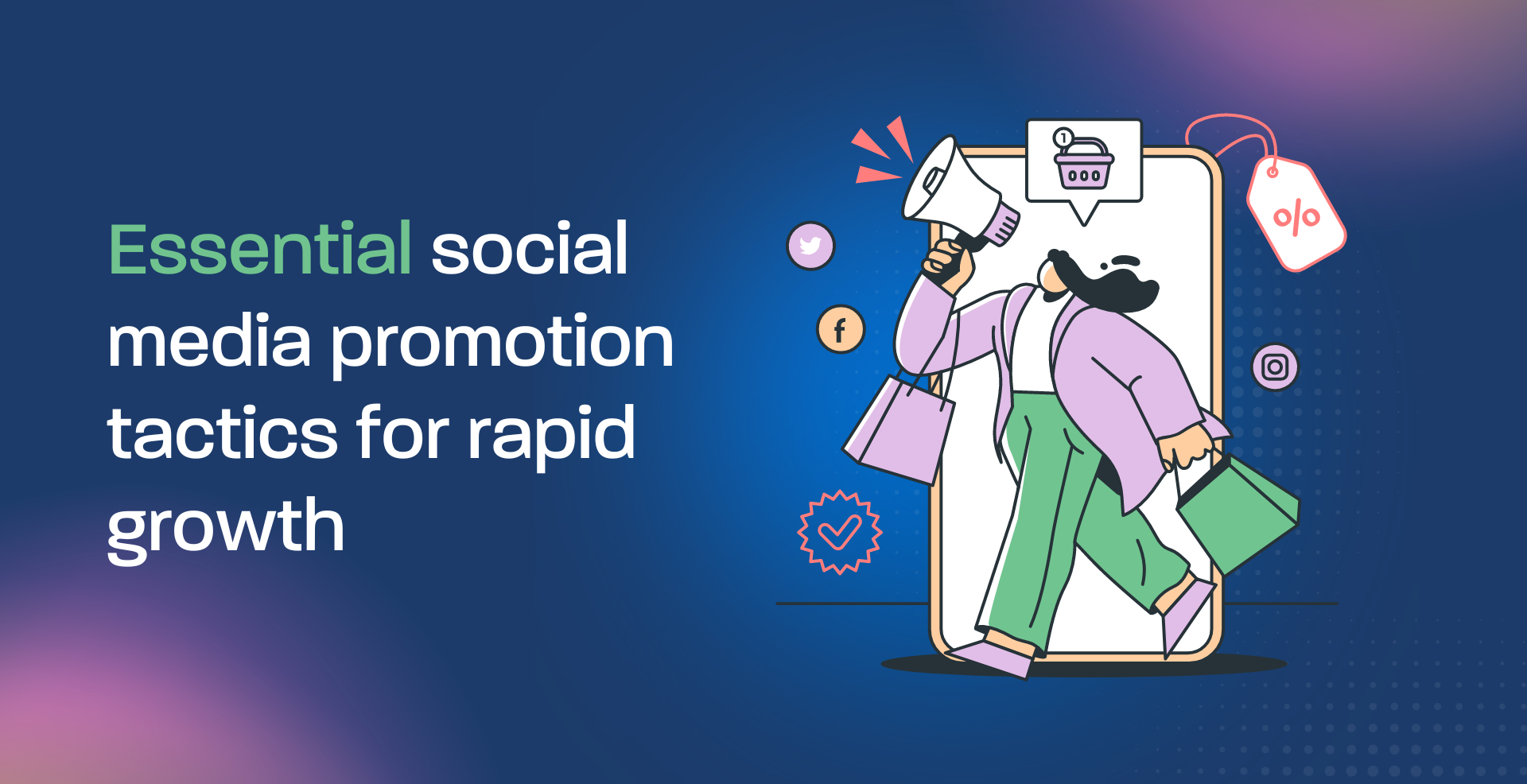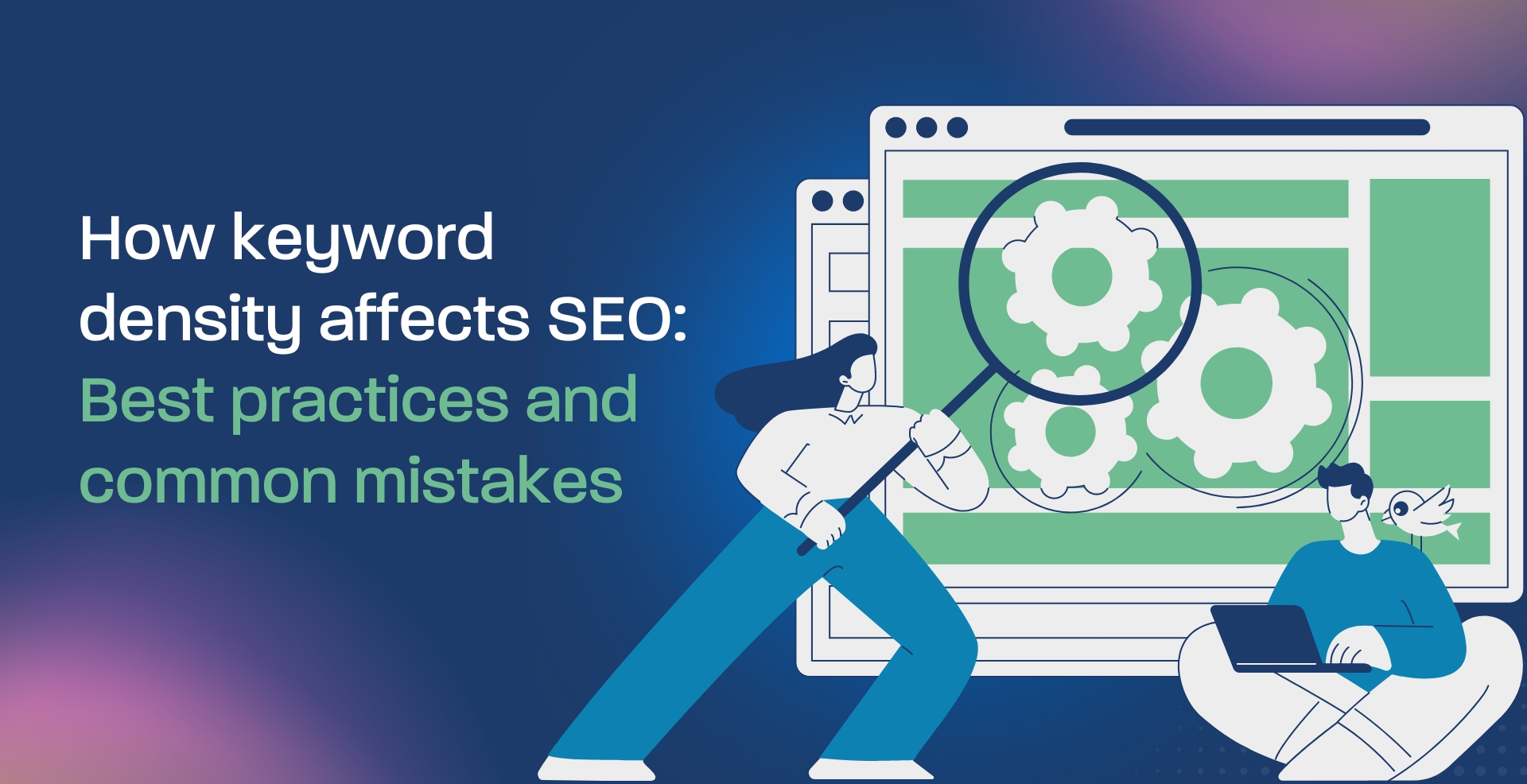We’re diving into the latest social media trends for 2024 and 2025. This is your go-to guide to stay updated. From AI-driven content to the dominance of video, we’ve got the scoop. Did you know that AI tools are reshaping how we create posts? Major brands are already on board, using AI to enhance their strategies. Social media platforms like TikTok and YouTube lead the charge with long and short-form videos. And let’s not overlook the rise of text-only posts on LinkedIn and Facebook. Whether you’re a social media marketer, manager, or an avid user, understanding these trends is key to crafting an effective social media strategy.

Unpacking the Influence of AI on Social Media Trends
The influence of AI on the latest social media trends is profound. AI tools are revolutionizing how we create social media content, saving time for social media managers. Brands like Gatorade have utilized AI-generated visuals, while tools like Copy.ai streamline caption creation. On another note, AI’s role extends to enhancing social media ads and offering personalized experiences for social media users. For insights on managing your follower strategy, check out our post on navigating the follow-unfollow dynamic.
AI isn’t just a tool; it’s reshaping our approach.

AI and the Redefinition of Brand Authenticity
AI tools redefine brand authenticity by helping brands tap into user-generated content (UGC), enhancing trust and connection. With the latest social media trends, brands leverage AI to curate genuine customer stories and reviews. Users resonate more with these real experiences, increasing engagement and loyalty. Integrating AI in our social media strategy transforms how we communicate authenticity. As we adapt, it’s clear that blending AI with human creativity keeps our social media content fresh and relatable. This balance is key for future success.
AI’s Impact on Social Media Content Generation
AI’s role in content generation is transforming our social media strategy. Tools like Canva simplify image creation, while chatbots enhance user interaction. These innovations align with the latest social media trends. A staggering 75% of social media marketers plan to utilize AI for crafting and editing posts in 2024. Major brands are already leveraging AI-generated visuals to captivate audiences. With AI, our social media marketing efforts become more efficient, allowing us to focus on more creative tasks, ultimately boosting engagement and reach.

The Importance of Video in Contemporary Social Media
Video content’s role in today’s social media is evident: It drives engagement. Users prefer visuals, whether short clips or longer formats. TikTok and YouTube are leading this trend, pushing for varied video lengths. Marketers are investing more in video, recognizing its power in enhancing reach. This surge in video content is undeniable.

The Reign of Long-Form Video Content
The reign of longer videos is reshaping our approach. Platforms like TikTok and YouTube fuel this shift, pushing for extended formats. We see deeper engagement and storytelling potential with these longer videos. Users crave detailed, comprehensive content, making long-form videos a hit.
Incorporating these trends into our social strategy can elevate our reach. As social media managers, we must adapt swiftly to these evolving preferences. Staying current with these latest social media trends ensures we remain relevant and engaging.
The Emergence of Text-Only Posts
The rise of text-only posts signals a shift in the latest social media trends. Our audiences crave quick, digestible content, especially on LinkedIn and Facebook. These posts are simple yet powerful, driving engagement without the need for visuals. Interestingly, this trend aligns with our findings on marketing trends to watch out for in 2024. We see social media managers incorporating more text-only posts to streamline content creation and keep users engaged. It’s a smart move, given the evolving preferences of social media users.
The Evolving Role of Social Media Platforms
The evolving role of social media networks is undeniable. Platforms like Instagram and Facebook integrate AI for a better user experience. TikTok remains a Gen Z favorite due to its engaging formats. These top social media channels are where strategic brands focus their efforts. For instance, our insights on influencer marketing highlight how brands leverage platform-specific features to engage audiences. Social media marketers must adapt to these latest social media trends to remain effective. Social media users’ preferences are always shifting.

Champion Social Platforms for Strategic Brands
Strategic brands know how to leverage the latest social media trends on top social media channels. TikTok and Instagram dominate, attracting a significant number of social media users. By tapping into platform-specific features, brands maximize engagement and ROI. Notably, Business Insider highlights Gen Z’s preference for TikTok and Instagram over traditional search engines. This shift underscores the need for a dynamic social media strategy. As social media marketers, we must adapt to these trends to stay relevant.
LinkedIn: A Gen Z Favorite
Gen Z finds LinkedIn increasingly attractive, shifting its focus from personal stories to professional growth. This platform is buzzing with industry insights and job opportunities, aligning with major latest social media trends. We notice Gen Z engaging more in knowledge-sharing, boosting their careers. This mirrors our insights on 6 marketing trends to watch out for in 2024. The surge in text-only posts simplifies content creation, making LinkedIn ideal for concise, impactful updates. As social media marketers, recognizing this shift is crucial for an effective social media strategy.
The Rise of Social Commerce in 2024-2025
The rise of social commerce in 2024-2025 is reshaping how we shop. More purchases are made through social media networks, especially on Facebook and Instagram. These top social media channels offer seamless shopping experiences. Social media managers must keep pace with these latest social media trends to stay relevant. Notably, augmented reality features are enhancing product interactions, making shopping more interactive. We’ve discussed similar trends in our article on 6 marketing trends to watch out for in 2024.

How Social Media Facilitates Customer Care
Facilitating customer care through social media channels has become indispensable. Social media managers utilize the latest social media trends to provide instant support via AI chatbots. These bots offer personalized responses, meeting the high expectations of social media users for quick customer service. This approach not just saves time but also enhances user satisfaction. Social media marketers should integrate these tools into their strategies, ensuring seamless customer interactions. Embracing these trends is key to maintaining a competitive edge in today’s fast-paced digital environment.
The Progress of Social Commerce and its Future Potential
The progress of social commerce has shown remarkable growth. With sales projected to hit $144.62 billion by 2027, it’s clear we are in the midst of a significant shift. Younger generations, like millennials and Gen Z, are leading the charge.
Social trends reveal that brands must optimize their strategies to captivate these demographics. For instance, Lemon8 is gaining traction in the U.S., as reported here. Social media marketers need to adapt quickly to these latest social media trends to stay relevant.
The Role of Authenticity in Social Media Marketing
Understanding the role authenticity plays in social media marketing, we see a shift toward genuine connections. Brands are focusing more on user-generated content, which resonates better with audiences. This trend aligns with the latest social media trends, emphasizing real stories and transparent communication to build loyalty.
Consumers are savvy; they can spot inauthenticity a mile away. Thus, balancing AI-generated content with human touch is crucial. In this dynamic space, social media marketers must continue to innovate while keeping authenticity at the forefront.

Real vs. AI-Generated Content: The Preference for Authenticity
The preference for authenticity over AI-generated content is evident. Consumers can easily spot inauthenticity, and trust genuine interactions more. While AI can streamline content creation, brands must integrate real stories to captivate audiences.
For example, check out how Jess Val Ortiz’s approach on TikTok resonates with followers. As we navigate these social trends, balancing AI efficiency with a human touch becomes crucial.
Social media managers must juggle both to create compelling social media ads that truly engage.
The Changing Face of Influencer Marketing
The evolving nature of influencer marketing has us all paying close attention. The latest social media trends highlight a move towards micro and nano-influencers, who provide more genuine engagement. Big-name influencers are losing ground, and brands are catching on.
Interestingly, TikTok’s extended video capabilities are giving influencers more tools to tell their stories. Don’t miss out; see how #ScrubDaddy is leveraging this on TikTok.
As we navigate these shifts, staying updated on these trends is crucial for effective social media marketing.

The Boom of the Creator Economy
The rise of the creator economy has us all buzzing. Influencers and content creators are now pivotal in social media marketing. They craft relatable and engaging content that resonates deeply. This shift marks a significant change in how brands communicate with their audience.
We see social media managers increasingly collaborating with these creators, harnessing their unique voices for authenticity. This collaboration isn’t just about ads; it’s about genuine interaction.
When we think about the latest trends, it’s clear that creators are at the forefront of social media networks.
Downsizing Trends in the Influencer Market
Downsizing is trending in influencer marketing, focusing more on micro and nano-influencers. These smaller influencers bring high engagement and authentic connections, making them preferable over celebrities. Brands find this shift cost-effective for reaching niche audiences.
We see social media networks increasingly valuing genuine interactions over broad reach. This has changed the dynamics of social media ads, which now prioritize depth over breadth. As we embrace these changes, it’s clear that smaller voices are making a bigger impact in the latest social media trends.
The Future of Social Media: Predictions for 2025
Exploring the future of social media, we foresee the latest trends in 2025 focusing heavily on AI and AR advancements. More personalized experiences will become the norm, as AI tailors content to individual preferences. Social commerce will likely explode, driven by Gen Z’s purchasing power. Newer social media platforms may emerge, challenging the likes of TikTok and Instagram. For a deeper dive into social media usage trends, check out Statista’s insights on Twitter users worldwide. Expect stringent regulations on content, enhancing user safety and trust.

The Potential Surge of Augmented Reality Options
The potential for augmented reality options to surge is undeniable. With the latest social media trends pointing towards more immersive experiences, augmented reality is becoming a key player. We are witnessing AR filters and lenses integrate seamlessly into social platforms like Snapchat and Instagram. Brands are creating unhinged social media campaigns that captivate users.
As augmented reality options grow, they offer unique ways to engage audiences and enhance digital interactions. This trend is not just a fad but a glimpse into the future of our digital engagement.
Preparing for Possible Regulations in Social Content and Platforms
Preparing for upcoming regulations in social content and social media platforms requires staying updated on the latest social media trends. We must adapt our strategies to ensure compliance and maintain engagement. This involves monitoring regulatory changes, discussing potential impacts, and adjusting content accordingly.
Keeping an eye on unhinged social media campaigns can provide insights into what might be deemed inappropriate under new rules. Let’s be proactive in analyzing these shifts to optimize our presence and stay compliant. How are you preparing for these changes?

FAQ
-
How is AI influencing social media trends? AI is revolutionizing social media. Over 80% of marketers use AI tools. These tools save time and streamline workflows. For instance, Copy.ai helps generate captions. Midjourney creates images. Brands like Sephora and Coca-Cola use AI-generated content in campaigns.
-
What is the importance of video in social media? Video content is dominating. Long-form videos are making a comeback. TikTok and YouTube are pushing longer formats. Short-form videos are thriving too. Marketers invest heavily in these formats for better engagement.
-
Why are text-only posts becoming popular? Text-only posts are simple and effective. They are easy to create and consume. LinkedIn and Facebook users especially like them. These posts fit well into social media strategies for their simplicity.
-
How are social media companies integrating AI? Platforms like Instagram and Facebook are adding AI features. These enhance user experiences. TikTok remains a favorite among Gen Z. It offers engaging content formats that keep users hooked.
-
What is the future of social media by 2025? Expect increased AI and AR use. User experiences will become more personalized. Tighter regulations around content are likely. Social commerce will continue to grow. Brands need to stay adaptable.



